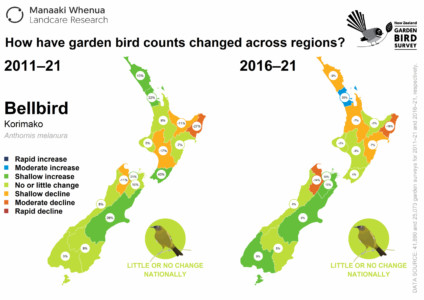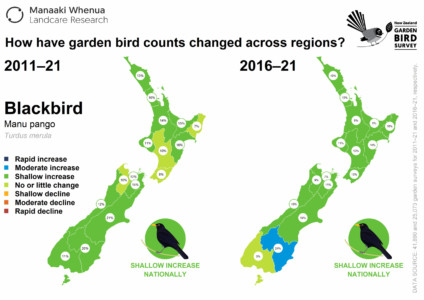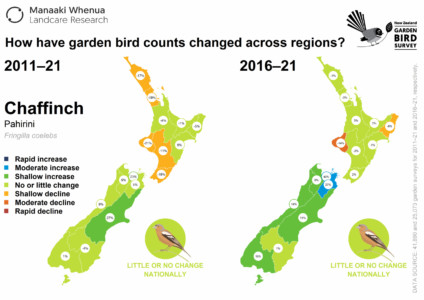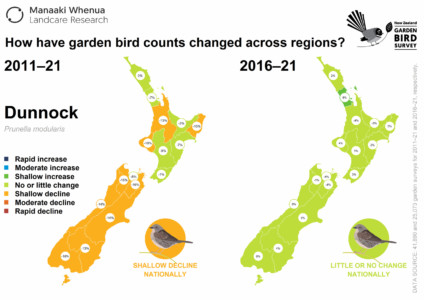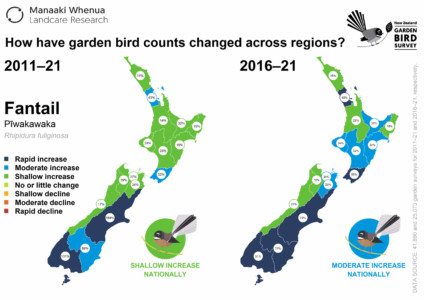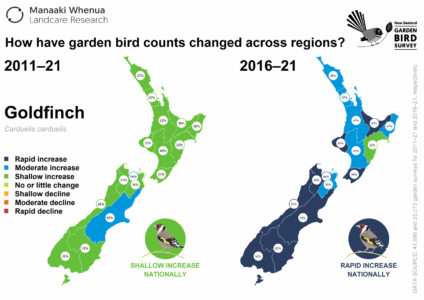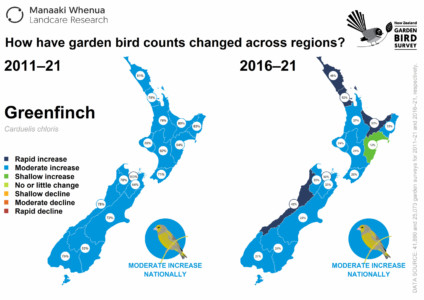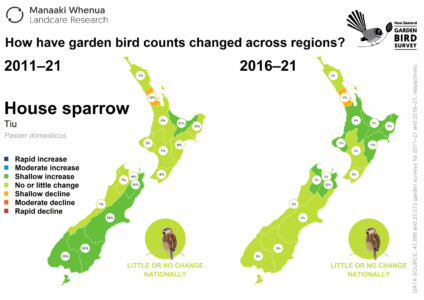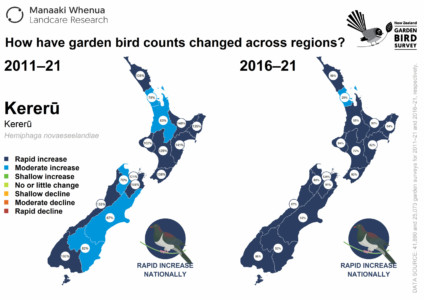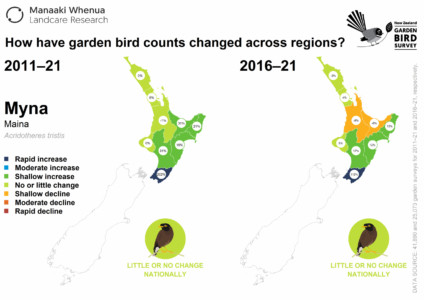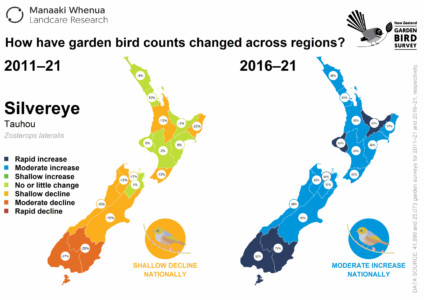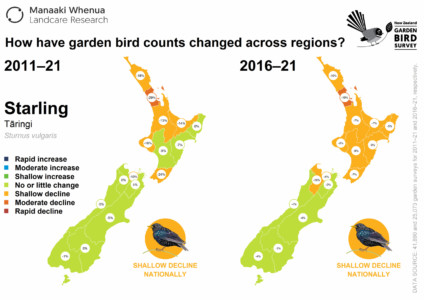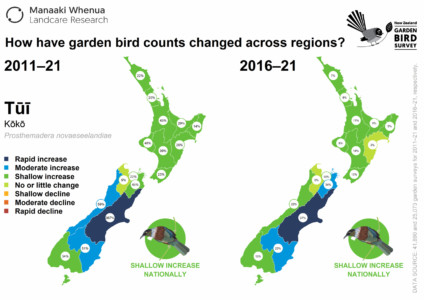The State of New Zealand Garden Birds 2021 | Te āhua o ngā manu o te kāri i Aotearoa, a report released recently by Manaaki Whenua – Landcare Research, shows the latest results from New Zealand’s longest-running citizen science project – the New Zealand Garden Bird Survey.
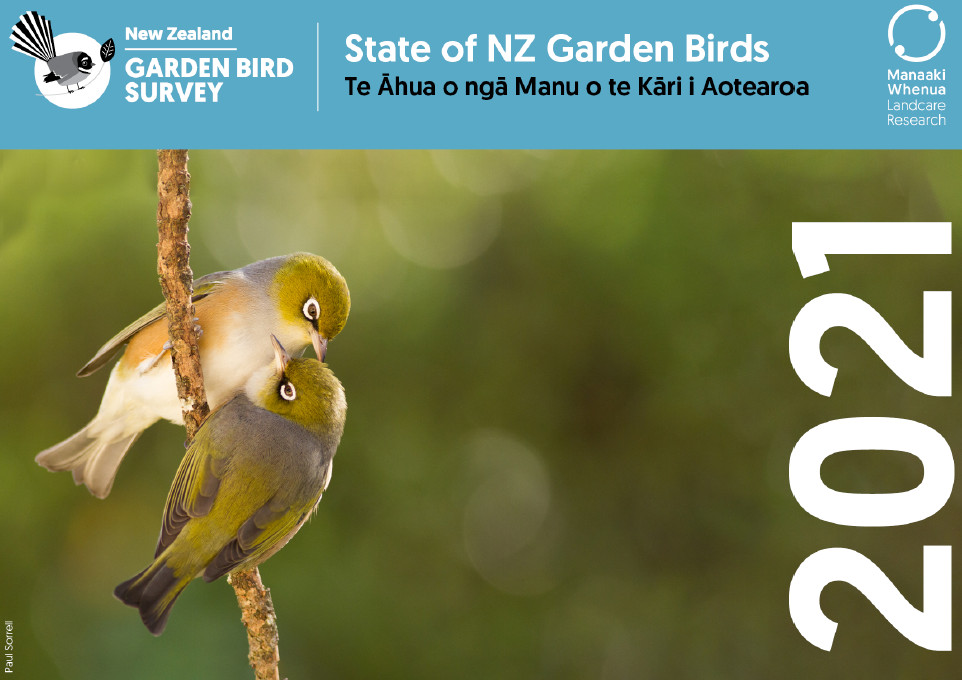
The annual survey, which began 15 years ago and is held every year in July, helps scientists understand the health of garden bird populations and the wider environment. It does this by showing how bird counts are changing across Aotearoa using two timeframes – over the past 5 years and the past 10 years.
In 2021, New Zealanders again turned out in their thousands to take part in the survey and count the numbers of birds they saw in gardens, parks and school grounds – 14,623 people headed outside to complete the survey.
The tens of thousands of garden surveys are put through an analysis using supercomputers. This analysis takes account of whether birds are fed in each garden, whether the garden is in a rural or urban setting, and how many gardens are in each region of New Zealand.
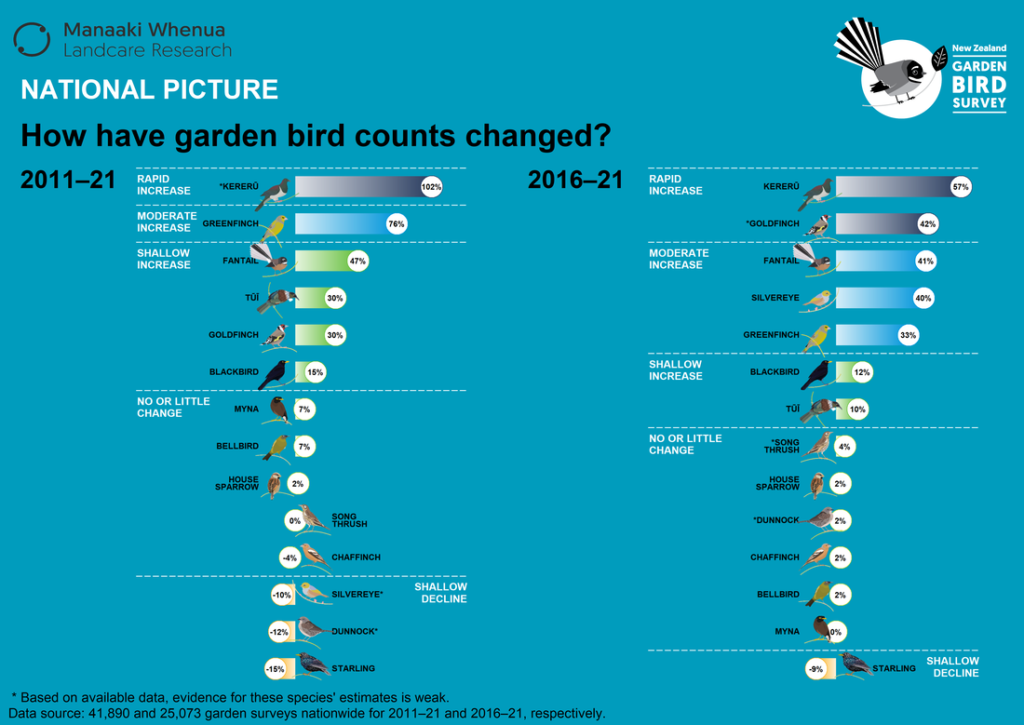
Our data analysis showed positive signals emerging for four native species
- Kererū counts show a 102% increase over 10 years, while pīwakawaka (fantail) counts were up 47% over the same timeframe.
- Tūī (kōkō) continue to increase nationally (30% over 10 years), and increasingly in Canterbury, Marlborough, Otago, and the West Coast.
- And there’s good news for the silvereye (tauhou). The data shows its slow decline is lessening, with a moderate increase in numbers since 2016.
Things are not looking so good for starlings. Numbers continue to decline over both the five and 10 year period, although their rate of decline has slowed compared to last year.
Numbers of song thrush, house sparrows, dunnock, chaffinch, and korimako (bellbirds) show little change over the past five years. There has been little change to myna counts nationally, but in Wellington they have shown a rapid increase – 202% over the past 10 years.
Manaaki Whenua researcher, Dr Angela Brandt, says the data lets us understand how bird populations are changing across New Zealand. “What’s exciting about having so many years of surveys now is that we can see how trends are changing over time. Some species show an uptick – like kererū – or a lessening decline – like tauhou – compared with earlier reports. Importantly, because the survey is done every year, we could have an early warning if a species started to decline.”
The NZ Garden Bird Survey founder, Dr Eric Spurr, says the results are very encouraging, and show the value of long-term citizen science monitoring. “The survey does not attempt to determine the causes of changes in bird counts, but it is tempting to suggest that the increases in counts of native birds reflect the results of increased predator control and habitat restoration activities around the country.”
This year the survey runs from 25 June – 3 July 2022. There is a lot of bird identification information on the NZ Garden Bird Survey website, so plenty of time to get familiar with the manu that visit your garden. Our post-survey research showed 78% of people who participated in 2020 found the Garden Bird Survey helped their learning about birds and nature.
More: State of New Zealand Garden Birds | Te āhua o ngā manu o te kāri Aotearoa 2021
For more information or to arrange an interview with either Dr Angela Brandt or Dr Eric Spurr, please contact Kim Triegaardt at triegaardtk@landcareresearch.co.nz

